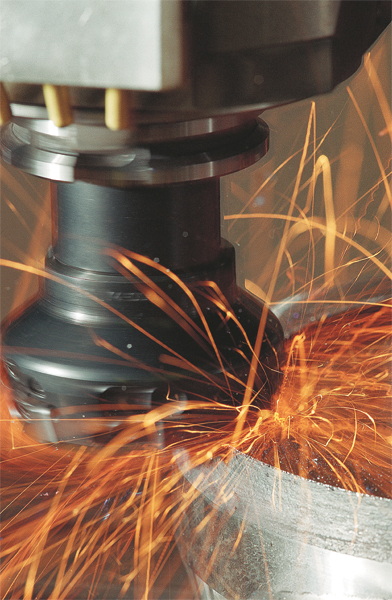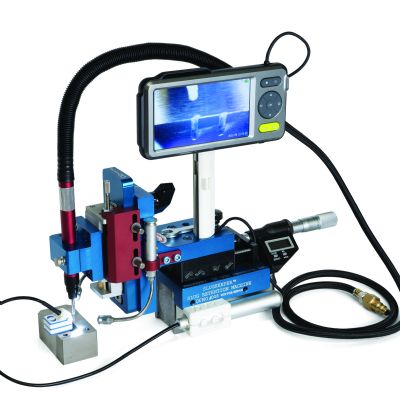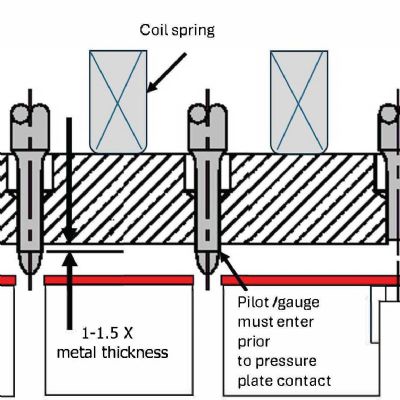To take the sting out of the high upfront cost of CBN, die shops should seek to purchase CBN from suppliers as a solid insert—available in various geometries including square and triangular designs, and grades where each corner is utilized. This practice will reduce the price per edge compared to the purchase of tipped inserts, which do not allow for the application of every corner of the product. For example, Secomax CBN products (from Seco) reportedly can outperform ceramics by more than 30 times when machining pearlitic cast iron.
In terms of cutter bodies, the best designs for optimizing surface finish when hard milling tooling components for stamping are shell milling cutters, six-pocketed milling cutters, cassette milling cutters and adjustable milling cutters.
Considerations for Hard Milling
For manufacturers considering hard milling for the first time, or looking to get back into it, there are several variables to consider when selecting the right cutting tools, and ultimately to move forward with conducting a CBN milling test.
First, determine whether the hard-milling operation will involve rough- or finish-machining, as this will help guide the selection of the right insert and cutter for the job. The approach angle also influences cutter selection, so it’s important to decide whether square-shoulder or face milling is the optimum choice.
Another consideration is evaluating cutter geometry and setup rigidity, as this helps determine whether a positive or negative cutter works best in a particular application. And, manufacturers should establish whether or not a wiper insert is necessary. Wiper inserts sit slightly higher than the other inserts and wipe down the part to create a superior surface finish. Those seeking a porous finish would not require a wiper insert.
If hard milling is an entirely new approach for a manufacturer, the company should seek an OEM partner that specializes in hard-milling tools. Such a partner can assist in cutting-tool selection, as well as offer a cutting strategy that includes proper setting of feeds and speeds, depths of cut and programming. After all, hard milling differs significantly from conventional milling, and proper know-how is vital to successful implementation, future gains in productivity and profitability.
When preparing to conduct a milling test—in light of the high upfront costs associated with CBN—manufacturers should take steps to ensure they don’t invest a significant amount of money during the evaluation. For example, the test cutter need not have every pocket loaded with CBN. An effective test can occur with only one or two inserts and an adequately adjusted feed rate.
Proper Technique
If after much consideration a manufacturer decides to invest in the hard-milling process using CBN, it should keep two very important things in mind. First, while conventional machining processes apply coolant to help disperse heat and effectively remove chips, a manufacturer using CBN to hard mill should avoid the use of coolant. CBN generates excessive heat at the cutting zone, and as heat transfers to the chips the coolant vaporizes on contact. Further, coolant can create instability in the tool since milling involves interrupted cuts—the CBN insert is out of the cut 50 percent of the time, so it’s constantly heating up and cooling down. Adding coolant to the process would cause the insert to go into thermal shock. To displace chips, die shops can use compressed air.
In addition, operators will often mistakenly program the milling machine for climb cutting during hard milling. During climb cutting, the width of the cut starts at the maximum and decreases to zero. While climb cutting is the correct technique for milling with carbide and high-speed steel cutters, operators should avoid this method when hard milling with CBN, as it is detrimental to tool life. Climb cutting grabs a thick chip and thins it out during the cut. With CBN, rather than grabbing a thick chunk of steel and slamming into the side of a part, optimum results come from easing into the material and producing a larger chip as the cutter exits the part.
While change can be scary, manufacturers that currently perform a lot of grinding and post-heat treatment operations should consider hard milling—it’s faster and less costly. Sure there are still some unknowns, but with the right OEM support and a clear understanding of what goes into the process, anyone can be successful. MF
See also: Seco Tools Inc.
Technologies: Tooling
 Chad Miller
Chad Miller







 Video
Video
